Published May 8, 2017
Visiting The Original Series Set Tour
Visiting The Original Series Set Tour
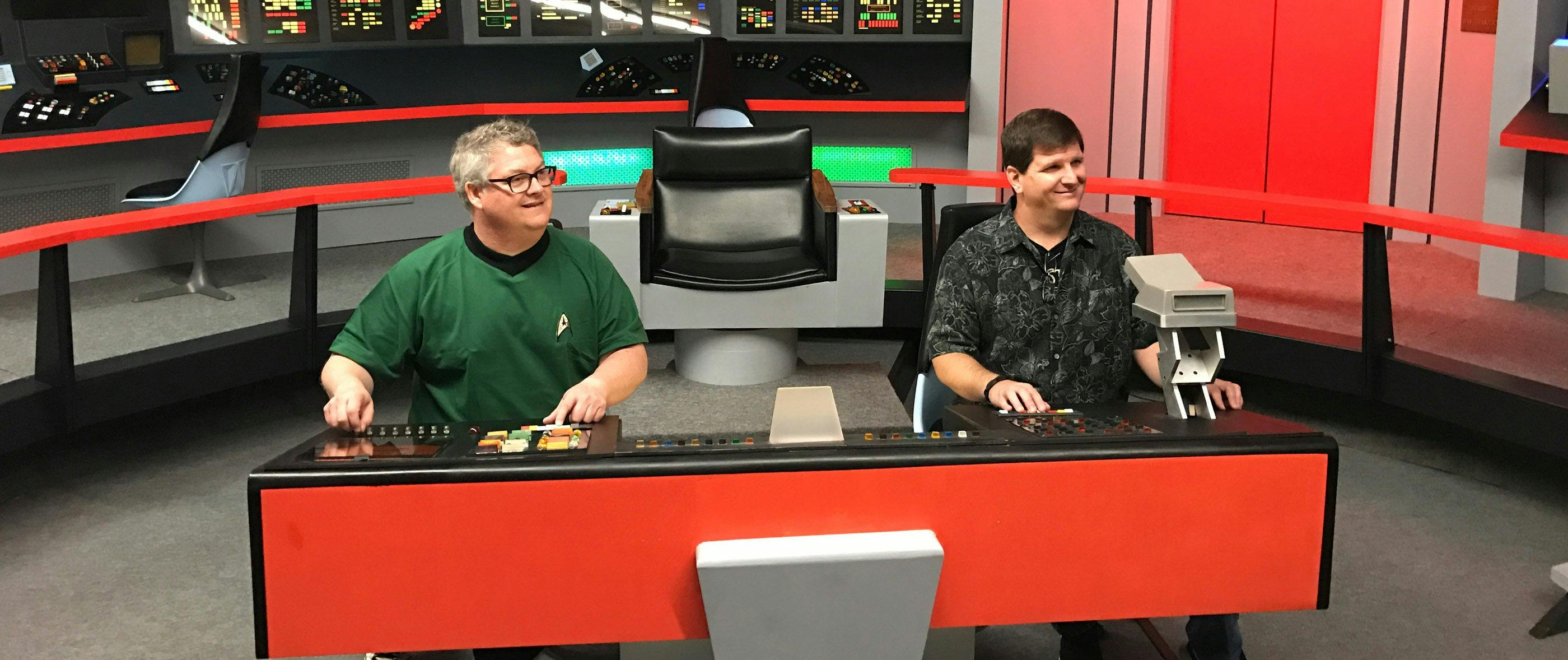
It’s the fantasy of pretty much every Star Trek fan across the galaxy: to have stepped on to the sets of Star Trek: The Original Series while the show was in production between 1966-1968. Those sets, sadly, are a thing of the past, just as Star Trek remains so much a part of the future. But, now, thanks to the dreams, tenacity and – he’ll be the first to admit – obsession of one man, those sets, or remarkable recreations, are alive again and ready for fans to experience in the present.
That man is James Cawley, resident of Ticonderoga, New York, lifelong Star Trek fan (with a unique connection to Trek legend William Ware Theiss, who provided the blueprints that eventually inspired the Set Tour) and veteran Elvis Presley impersonator. Yes, you read that right: Elvis impersonator. He a pro and makes his living it; he’s been complimented and kissed on the cheek by Priscilla Presley and performed all over the word, even touring with the Jordanaires. So, when Cawley greeted visitors to Star Trek: Original Series Set Tour this past weekend, there was no mistaking him. He was the guy with the impressive mane of Elvis hair – thick, jet-black, long and swept to the side. Say it with us: Elvis was in the building. And that building is an old supermarket – Cawley bought Trek comic books there as a kid -- that’s been converted into Stage 9 at Desilu, where TOS rolled camera.
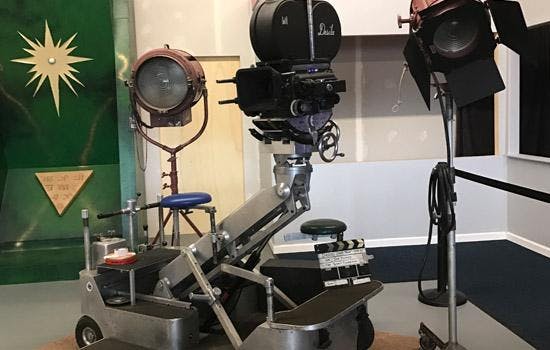
“The idea,” Cawley explained, “is to make visitors feel like they’re working on the show. This is Stage 9, with the Enterprise bridge and everything on it: Kirk and Spock’s quarters, sickbay, engineering, a Jefferies tube, the transporter room, the bridge. Fans can sit in the captain’s chair. They can look up into the Jefferies tube. We’ve made it as interactive as possible.”
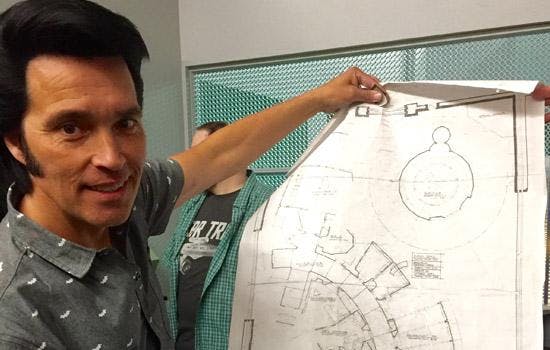
On this particular day – May 6 – Cawley and his team of volunteers endeavored to make Authors’ Day a memorable occasion. Nearly a dozen Trek novelists – among them Dayton Ward, Michael Jan Friedman, William Leisner, David Mack, Kevin Dilmore and David R. George III – took the tour in the late morning and then sat behind tables in the lobby area to meet and greet and sign their books for fans who’d made the trek to upstate New York for the event. The fans – men and women, boys and girls, folks of various nationalities, many (arguably most) in Trek uniforms -- ooh-ed and ahh-ed at everything they saw and heard.
And here’s as good a place as any for step-by-step tour of the tour:
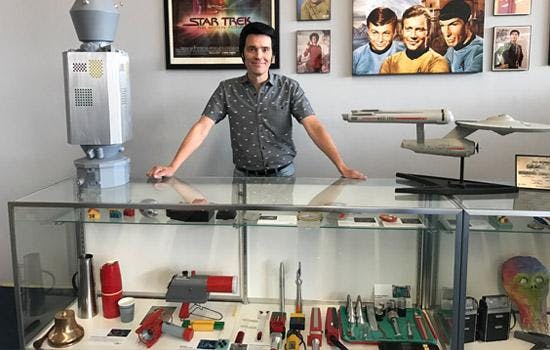
The Entrance and Lobby – Fans enter here, pay for their tour and, along the way, quickly get a sense of what they’re in for, courtesy of a Gorn and Salt Vampire and some retro Trek curtains. The lobby is still a work in progress; this area will soon feature a large array of Trek memorabilia, including props and costumes. But what’s there now is already pretty impressive. Oh, and it’s here that the tour starts, your guide providing an introduction as fans stand behind the sliding doors – opened via a hand-operated pulley system – that give way to the sets.
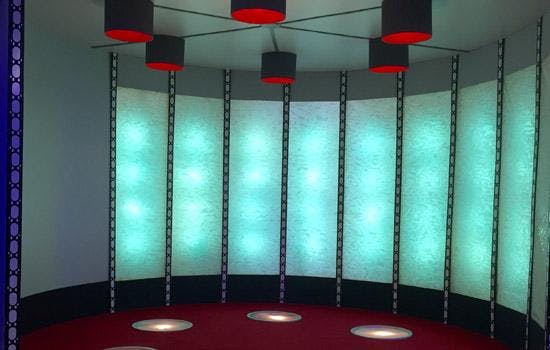
The Transporter Room – Get ready to beam up. This is painstakingly recreated and it’s a wow amongst many wows on the Set Tour. Fans can stand on the first few spots (ask about the glass). And then you’ll want to get behind the controls.
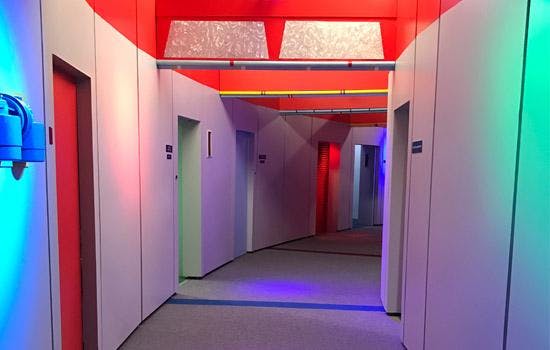
The Corridors – Cawley and company have recreated the hallways to match the tricks employed by the TOS crew. In other words, they’re shaped so that they appear far longer than they really are. “I love the corridors,” Cawley notes. “You get a sense of déjà vu, even though you’ve never been on the sets before. It’s just that you’ve seen these corridors a million times and think you’ve been there. You know them intimately. I’ve seen grown men cry walking through the corridors. It’s like they’re… home. For everyone of a certain age, it's like you're a kid again.”
Astro-Medicine Ward 4 – Speaking of feeling like home, Dr. McCoy, or DeForest Kelley, actually, would marvel at the sickbay set. It’s matched down to the colors of the fabrics, to the green blood to the side of a bed, to the barbaric “antique” medical tools on the wall.
And on it goes:
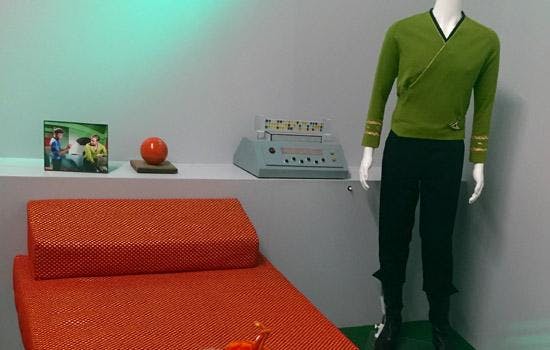
Kirk’s Quarters – We like the Tribbles on the captain’s bed. Worth noting: there's a brass treasure box in the quarters (sorry we don't have a pic to share) and that is the original box used on the set in 1966. You'll see it in a picture behind Shatner in the recreated space. “He actually gave it to the president of his fan club, The William Shatner Fellowship,” Cawley explained. “She passed away about two years ago and we got it from her daughter. So, it's now back on the set where it belongs.”
Jefferies Tube – This spot is a favorite for visitors. “Who doesn’t love the Jefferies tube?” Cawley asked. “It’s so visual, so functional. We’ve put strobe lighting in just to amplify the effect. And this is also where Nichelle Nichols did the photoshoot for her Ebony cover.”
Engineering – Scotty would be proud. His old stomping grounds look like, well, his old stomping grounds. The highlight is the depth-defying background that appears to be endless, but isn’t. Cawley once again relied on the magic created by those before him in order to replicate the look and feel.
The Decompression Chamber – A work in process, to be finished soon. It’s, well, fascinating, to see it only partially done and to hear how it’s being crafted and matched to old set/episode photos.
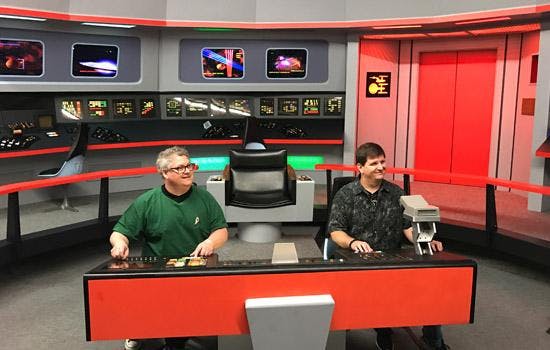
The Bridge – This is the highlight for most visitors. The buttons blink. The switches toggle left and right. The chairs swivel. You can hold an earpiece. The graphics above were never seen on TV… or not quite. Gene Roddenberry, according to Cawley, wanted imagery displayed, but it meant time, money and additional workers on set, and he didn’t have the budget for that. Cawley positioned modern-day TV screens/monitors in place, thereby creating the effect Roddenberry originally envisioned.
One of the authors, Dave Galanter, marveled at what he saw. "I will tell you this," he said. "It has helped me write books because to be on these sets and then to choreograph and stage things in your books, you have a much better mindset of where things were, that you didn't see on the TV show or you didn't see the depth and how close together things are. It feels much more like a ship. Being in the medical bay finally clicked. 'That's what's sickbay is like! This is where Nurse Chapel walked!' These guys had taken the original designs, the original blueprints, and they made it as real as possible. It's not just the sights, but it's the sounds. You hear the engines of the ship, you hear the little sonar ping on the bridge, and it's a beautiful experience in that sense. And you can push a button, and the (red alert) klaxons go off.
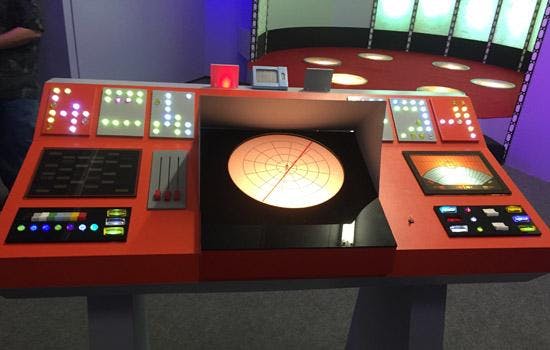
And the last words, deservedly, go to Cawley. He once again addressed his passion and determination to getting everything right, precise, so much so that Gene Roddenberry, Bill Theiss and Matt Jefferies, as well as the most-ardent Trek fan, would approve.
“As you go, you start looking at things in more detail,” Cawley said. “‘OK, what is that thing? What did they use? Where did it come from?’ And we start digging. Of course, the internet has become this massive tool. You can find just about anything if you're determined to look. That's what we've been doing. Plus, we go to swap meets. We go to all these different things where antiques are sold. And we hunt. We have a whole group of people who are doing this from one end of the country to the other. People that have come to be involved in this project for 15 years are from all over the world. So, we've got a lot eyes and ears out there. People are looking and they're constantly trying to make it better. ‘Oh James, help, look we found this. Here's this.’"
Star Trek: The Original Series Tour is located at 112 Montcalm Street in Ticonderoga, New York. Go to www.startrektour.com for details and to purchase tickets.

